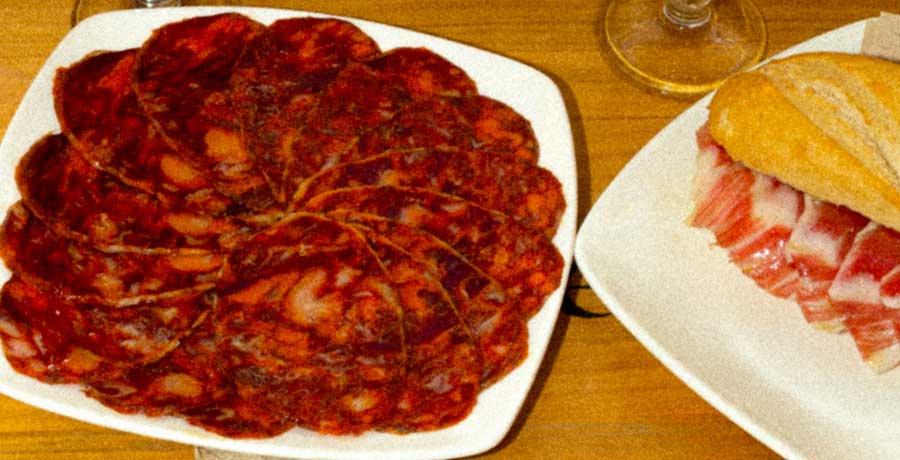Blog
Iberian bellota chorizo: the flagship cured meat that wins every palate

Iberian bellota chorizo is one of the most iconic cured meats in Spanish gastronomy. Its unmistakable flavor and juicy texture make it a beloved delicacy both nationally and internationally. In this article, we explore what makes this product unique, how it’s made, and the best ways to enjoy it.
What is Iberian bellota chorizo and what makes it special?
Iberian bellota chorizo is made from lean meat and fat of Iberian pigs fed mainly on acorns during the montanera season. This diet, along with free-range rearing, gives the chorizo exceptional organoleptic qualities.
Main characteristics:
- Flavor and aroma: Intense and distinctive, with smoky and spicy notes from paprika and traditional seasonings.
- Texture: Juicy and firm, thanks to a balanced ratio of lean meat and marbled fat.
- Appearance: Deep red with white fat marbling—a sign of quality and excellent infiltration.
Iberian bellota chorizo available at Museo del Jamón
At Museo del Jamón, we offer two perfect options to enjoy this delicacy at home:
- Chorizo Cular Ibérico de Bellota (whole piece): a traditional piece, carefully cured, perfect for slicing and enjoying at your own pace.
- Chorizo Ibérico de Bellota – Sliced: convenient and ready to serve—ideal for a charcuterie board or a quick, authentic bite.
Both options preserve all the aroma and quality of a traditionally crafted product.
How Iberian bellota chorizo is made
The production of this chorizo follows an artisanal process that ensures its quality and unique flavor:
- Meat selection: Carefully chosen lean meat and fat from acorn-fed Iberian pigs.
- Seasoning: The meat mixture is marinated with paprika, garlic, salt, and other spices, then left to rest so the flavors blend.
- Stuffing: The seasoned meat is stuffed into natural casings, giving it its traditional shape.
- Curing: The chorizo is cured in drying rooms under controlled conditions of temperature and humidity for several weeks, allowing its full flavor to develop.
Differences between Iberian bellota chorizo and other cured meats
Chorizo ibérico de bellota is often confused with similar products, but there are key differences:
Iberian lomo vs. caña de lomo
“Caña de lomo” is simply another name for cured lomo. Essentially, they refer to the same product.
Iberian bellota chorizo vs. Iberian morcón
While both come from the Iberian pig and share similar ingredients:
- Shape and size: Chorizo is long and cylindrical, while morcón is wider and irregular.
- Texture and flavor: Morcón is usually juicier and more tender due to the use of finer cuts and its larger size, which requires a longer curing time.
Nutritional benefits of Iberian bellota chorizo
Besides its incredible taste, Iberian bellota chorizo provides nutritional benefits:
- Healthy fats: Rich in monounsaturated fats—similar to those in olive oil—good for cardiovascular health.
- Vitamins and minerals: A source of B vitamins and minerals like iron and zinc, essential for healthy body function.
How to best enjoy Iberian bellota chorizo
To truly savor this cured meat, consider these tips:
- Serving temperature: Serve at room temperature to enhance its flavor and aroma.
- Proper slicing: Use a sharp knife to make thin, even slices.
- Pairing: Enjoy with a young red wine or a craft beer to elevate its flavor.
- Presentation: Include it in a charcuterie board with cheeses and artisanal breads for a complete gourmet experience.
Get the best Iberian bellota chorizo at Museo del Jamón
At Museo del Jamón, we take pride in offering products of the highest quality. Visit us at our locations in Madrid and discover our full range of Iberian cured meats.

